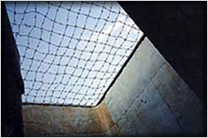
In December 1999, National Park Service (NPS) Northeast Regional Director Marie
Rust became a founding member of the International Coalition of Historic Site
Museums of Conscience. At the Coalition's first formal meeting, Ms. Rust met
Dr. Victor Shmyrov, Director of the Gulag Museum at Perm-36 in Russia, another
founding institution of the Coalition. Dr. Shmyrov's museum preserves and interprets
a gulag camp built under Joseph Stalin in 1946 near the city of Perm in the
village of Kutschino, Russia. Known as Perm-36, the camp served initially as
a regular timber production labor camp. Later, the camp became a particularly
isolated and severe facility for high government officials. In 1972, Perm-36
became the primary facility in the country for persons charged with political
crimes. Many of the Soviet Union's most prominent dissidents, including Vladimir
Bukovsky, Sergei Kovalev and Anatoly Marchenko, served their sentences there.
It was only during the Soviet government's period of "openess" of Glasnost,
under President Mikael Gorbachev, that the camp was finally closed in 1987.
Although there were over 12,000 forced labor camps in the former Soviet Union
, Perm-36 is the last surviving example from the system.
 |
Since 1996, the museum has undertaken the task of preserving and reconstructing the camp as a historic site. The museum has sent several delegations to the U. S. to learn from the National Park Service. In turn, a team of five NPS professionals, including experts in preservation and museum management, traveled to Russia in September 2001 to work with key staff at the Gulag Museum and learn about their civic engagement efforts.
Full Case Study (PDF) »
Get FREE Adobe Acrobat Reader »

|



